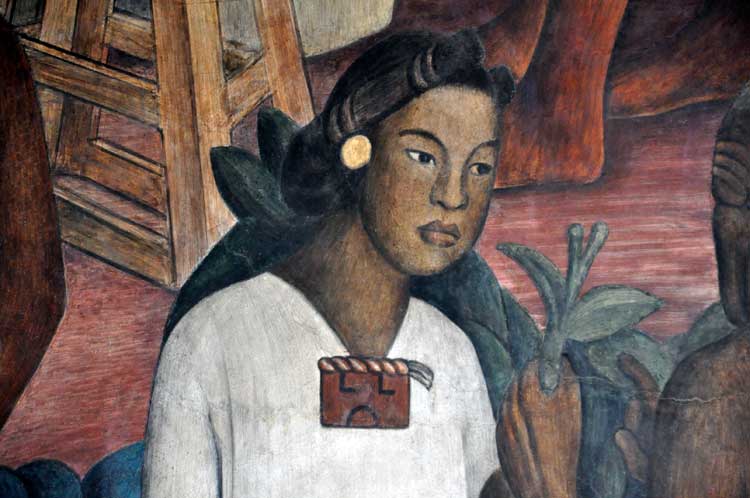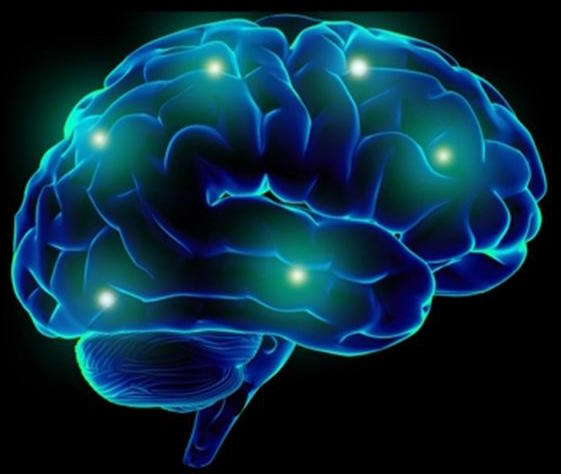From time to time Religious Theory (RT) invites well-known academic authors to outline current book projects that have not yet been published. This article, released in three parts, reflects a recent talk by Prof. Luis Leon, a well-known author of several key books on the theory of Latino religions and borderlands theory.
On April 15, 2013, the cover story of Time magazine declared that Latino evangelicals and Pentecostals were “transforming religion in America.” [1] While there has been considerable research on Pentecostal conversion in Latin America, there has been little written on Pentecostalism among Latina/os in the United States.[2] According to a study released in 2014 conducted by the Pew Research Center, sixteen percent of Hispanics in the U. S. are evangelical and Pentecostal.
The exact figures on Latina/os converting to Pentecostalism are impossible to determine, and estimates are contested. In 1997, the sociologist Andrew Greely, also an ordained Catholic priest, famously speculated that 600,000 Latinos “defected” from Catholicism to evangelical and Pentecostal faiths each year. However, more recently Timothy Matovina discovered that Greely had miscalculated, and that the correct number resulting from Greely’s calculation was 60,000.
Gaston Espinosa writes: “Of the 53 million Latinos in the United States, “about 66% are Catholic, while 27 percent identify as Protestant and non-Catholic Christian, though some put the figures at 62 percent Catholic and 33 percent Protestant and unaffiliated. Over 80% of all Latino Protestants self-identify as born again.”[3] Despite the disagreement over the statistics, there is little question that Latina/os are converting to Catholicism, and that the majority of these Protestant converts are evangelical and Pentecostal.
I am in the process of writing a new book that addresses this important but little-studied topic by focusing on the autobiographies and other writings of three Latino Pentecostal men, two of Puerto Rican heritage, and one Chicano (Mexican American) from the Victory Outreach church which began in East Los Angeles in 1968, founded by Sonny Arguinzoni, who is also one of the men in this study. Each man is now a famous evangelist, and there is a traceable line of vertical transmission of Pentecostalism through them. Additionally I will conduct an ethnographic thick description of a Spanish-speaking Victory Outreach (Alcance Victoria) church in East Los Angeles. Finally, I will interview six men and create profiles of their conversion narratives and of the intersections in their spiritualities, masculinities, and sexualities.
My hypothesis is that Pentecostal practice disrupts several distinct macho mythologies. In exploring Pentecostalism among Latino men, this project interrogates several imbricated topics, chief among them are conversion to Pentecostalism, masculinity, and the role of Eros, especially the love among men. My thesis question asks: Why are some Latino men converting to Pentecostalism? Related to this: What are the social, cultural, economic, and political, racial, and religious conditions of possibility for the construction, maintenance, and evolution of Latino masculinities? How do these men negotiate and narrate their racial, sexual, and religious identities, inside and outside of Pentecostalism? How do these stories speak to the cultural experiences, social expectations, and spiritual possibilities of racialized men in the United States? To what extent are Latino masculinities the product of colonialism, as Octavio Paz suggests, and how can they be decolonized? How are these men affected and how do they affect others in cycles of spiritual contagion?
By conducting a critical analysis of these mens’ stories as recorded in various literatures, and through ethnography and interviews, this study speaks to the allure of Pentecostalism while providing greater insight into religion and maleness. I don’t intend to generalize from these men’s experiences. Instead I take them as case studies alone; however I do propose their stories as examples of the possibilities of conversion, or the transmission of Pentecostalism.
As a result of the Pentecostal conversion phenomenon among Latina/os, researchers are asking about the motivations for the shift from a distinctly postcolonial Catholicism to born-again religions. Perhaps the most accepted explanation comes in the form of the rational choice consumerism theory, best articulated by Andrew Chestnut. Chestnut argues that the rapid growth of Pentecostalism is fruitfully viewed through the model of the religious marketplace, wherein Pentecostals offer an upgraded Christian product to Catholic consumers, peddling charismatic gifts of the Spirit, principally ecstatic worship and divine healing.[4]
As Chestnut puts it:
The utilitarian nature of Pentecostalism and popular religion in general means that the spiritual products offered to consumers of the divine must prove useful in their daily lives. Products that do not relate to believers’ quotidian existence will find few purchasers in the popular religious marketplace….spiritual products that hold little relevance to the social reality of impoverished believers will collect dust on the lower shelves of the market. If Pentecostalism is thriving in the [unregulated] Latin American religious marketplace, it is largely due to the utility of its products in consumers’ every day lives.[5]
My research suggests an alternative to the rational choice consumerism model arguing for an affective contagion approach to understanding conversion, whereby ideas and practices are transmitted and circulate throughout populations by simple connection, bodies acting upon other bodies, spreading affect like viruses attaching themselves to organisms. In the words of one theorist: “The social contagion thesis holds that emotions and beliefs spread through and leap between populations in a process more akin to a disease like the flu than rational choice…While the social contagion thesis may be simple, its conclusions are radical: under certain circumstances mere touch or contact with some sociocultural phenomenon is sufficient for cultural transmission to occur.”[6]
Social contagion spreads affects. While there is not universal agreement on the definition of affect, in the words of Kevin O’Neil: “Affect is similar to emotion or feeling, but has much more to do with the body than either. Affect is raw, reactive sensation…. It takes place before consciousness and before discourse. Hair standing on the back of a neck, the warm glow of holiday festivities, the rush of enthusiasm at a political rally—this is affect.”[7]
The originator of the theory, Baruch Spinoza, articulates it as follows: “By affect I understand affections of the body by which the body’s power of acting is increased or diminished, aided or restrained, and at the same time, the ideas of these affections [8] Brian Massumi, when translating Giles Deleuze and Felix Guttari, defines affect/affection as follows: “neither word denotes a personal feeling….is an ability to affect and to be affected. It is a prepersonal intensity corresponding to the passage from one experiential state of the body to another and implying an augmentation or diminution in that body’s capacity to act.”[9]
In concert with affect and contagion, meme theory presents an alternative to rational choice. Building on the gene theory as articulated by Richard Dawkins, memetics suggests that memes–ideas, practices, and affects–spread by means of a vehicle, in this case the body, and the replicator, which is the meme struggling to replicate itself. In this model, a meme is treated “as a replicator in its own right, operating entirely for the benefit of its own selfish replication.”[10] Replication occurs through imitation, either voluntary or involuntary.
This theoretical framing enables me to propose that Pentecostalism, as a constellation of affects and affective behaviors, can be understood through another speculative option: the mechanisms whereby Pentecostalism are transmitted are emotional, energetic, chemical, and memetic. I suggest this as an imaginative frame, and not as empirical science. I propose this heuristically, not as scientific conclusion, but as another way of imagining the phenomenon of Pentecostal conversion and transmission.
As Anna Gibbs puts it: “Rather, what I am suggesting is that theory needs to adopt a heuristic function, drawing creatively on different forms of knowledge to ask what if one conceived the world in this way? What then becomes possible in the space opened up by such a ‘passionate fiction”?[11] Framing the spread of Pentecostalism in this way enables a scholarly understanding of the emotional intensities of evangelical conversion, proposing new models to comprehend the increase of born again religion among Latinos, men in particular, while enabling also a deeper grasp of religion, affect, and transmission theory.
The space opened in the history of religions by this passionate fiction is indeed radical, for it challenges conventional theories of the development and growth of religion, proposing that religious conversion is not so much the product of agents of personal subject formation, the modern self-contained individual, who make informed decisions, but as a constellation of affects and memes struggling to reproduce themselves, hence realizing what Manuel Vasquez calls “a materialist” history of religion wherein belief, if not subordinated to the body, is at least co-constituative of religious evolution.[12]
Affect is a pre-emotional sensation that flows from one body to the next. The affects transmitted in Pentecostal ritual produce Eros, that is the binding love among men that is a life force yielding psychic and physical union, a death of the individual self while giving birth to a newly formed organism. Once members of a community contract Pentecostalism, it acts as a meme, whereby others imitate it in both voluntary and involuntary practices. In short, it can go viral, becoming rhizomatic, with roots in many soils, effecting and effected by a multiplicity of social, cultural, and political formations.
Affective Pentecostal ritual allows men to discharge surplus repression–especially during the rites of initiation or conversion wherein men weep openly, lay hands on and caress one another, embrace, and nurture each another—the affective Pentecostal spirit is contagious, passing from one man to the next, forming erotic bonds—unifying bodies— which then, as they tell it, motivates them to convert others. The affective state is transitive and liminal, and many converts to Pentecostalism struggle with the mandates of their new faith while others remain within the religion for only a short time. The narratives of these men demonstrate that the Pentecostal meme is contagious, that men affect and are affected by one another, converting more and more bodies and souls in memetic imitative practices which facilitates its transmission and spread.
The contagion model of Pentecostal transmission addresses questions left unanswered by the rational choice consumerism model. For example, if converting to Pentecostalism from Catholicism is a rational choice, why do some, most, Latina/os resist it? Contagion theory would suggest that those who are able to repel the allure of Pentecostalism carry the anti-bodies to infection, which may be a cultural and physical disposition and cognitive commitments that act as repellants. Why is there a high rate of recidivism among Pentecostal converts, and why do others remain within the faith? Again, the contagion theory would have it that there are differing amounts of viral load within each individual that either enable the virus to attain or to falter. The rational choice model offers very little by way of explanation for Pentecostalism’s failures among Latina/os.
Pentecostal subjectivity is characterized by intensely emotional experiences and expressions which are more fully accounted for by a theory of affect rather than a theory of autonomous subjectivity and rational decision making. While affect and contagion hypothesis frame human agency as susceptible to ideas as the body is subject to viruses, transmission of the ideas and practices is intentional and volitional. Typically, as in the case of Latino communities, the transmitter or evangelist is an external agent who comes preaching an idea or practice which he intends to spread horizontally; but vertical transmission also occurs when members of one’s own community communicate the meme. Taking this into account, my research asks not only about the marketability of the message, but the material conditions—economic, cultural, racial, and emotional, under which the message is rejected or takes hold and attains.
I propose that there may be more to the spread of Pentecostalism in Latina/o communities than rational choice or church growth models can explain— an approach centered on the emotions. In this model, Pentecostal conversion occurs in groups (two or more), wherein men affect one another, which then spreads feelings and emotions which leads to contagious imitative behaviors, that manifest as Eros; this is what I call spiritual erotics—a process that transforms Latino masculinity. Much of this work is animated by an exploration of this transformation.
Luis Leon is Professor of Religious Studies at the University of Denver. He is the author of La Llorana’s Children: Religion, Life, and Death, in the U.S.-Mexican Borderlands (University of California Press, 2004) and The Political Spirituality of Cesar Chavez: Crossing Religious Borders (University of California Press, 2014).
This article is published in three installments. The next weekly installment focuses on Pentecostal machismo and the nature of machismo and its feminine corollary Marianismo.
___________________________________________________________________________________
[1] I use the terms “evangelical,” “Pentecostal,” and “born again,” synonymously. Technically, evangelicals are Protestants who have experienced the ritual of becoming “born again,” following their interpretation of St. John 3:3, they have confessed their sins directly to God and professed Jesus as their lord and savior. Becoming born again is followed by charismatic engagements with the Holy Spirit, marked by weeping and other signs of emotionalism, including fainting and convulsions. Pentecostals are evangelicals who emphasize the gifts of the spirit as enumerated by St. Paul in Corinthians 1:9, particularly the gifts of divine healing and glossolalia, or speaking in tongues. Latin Americans and Latina/os make little distinction between evangelicals and Pentecostals.
[2] These exceptions are Gaston Espinosa, Latino Pentecostals in America: Faith and Politics in Action (Cambridge: Harvard University Press, 2015), and Arlene Sanchez Walsh, Latino Pentecostal Identity: Evangelical Faith, Self and Society (NY: Columbia University Press, 2003).
[3] Espinosa, Latino Pentecostals, 4.
[4] See especially R. Andrew Chestnut, “Spirited Competition: Pentecostal Success in Latin America’s New Religious Marketplace,” in Donald E. Miller, et. al., eds. Spirit and Power: The Growth and Global Impact of Pentecostalism (Oxford: Oxford University Press, 2013), 65-83.
[5] Ibid., 68.
[6] Darrin Hicks, “Darkness on the Edge of Town: On the Interface Between Linguistic and Racial Ideologies. In K. Tracy, J. McDaniels, & B. Gronbeck. (Eds.), The prettier doll: Rhetoric, discourse and ordinary democracy (Tuscaloosa: University of Alabama Press),” 103-141, 122.
[7] Kevin O’Neil, “Beyond Broken: Affective Spaces and the Study of American Religion,” in the Journal of the American Academy of Religion, December 2013, Vol. 81, No. 4, pp. 1093–1116, 1095.
[8] See Baruch Spinoza, “On the Origin and Nature of the Emotions, in Spinoza Ethics, ed. and trans by G.H.R. Parkinson (Oxford: Oxford University Press, 2000), 163-224.
[9] Brian Massumi, Notes on Translation, in Giles Deleuze and Felix Guttari, A Thousand Plateaus: Capitalism and Schizophrenia, trans. by Brian Massumi (Minneapolis: University of Minnesota Press, 1987), iv.
[10] Susan Blackmore, The Meme Machine (Oxford: Oxford University Press, 2000), ebook, 219.
[11] Anna Gibbs, “After Affect: Sympathy, Synchrony, and Mimetic Communication,” in Melissa Gregg and Gregory J. Seigworth, The Affect Theory Reader (Durham: Duke University Press, 2010), 189, emphasis in original.
[12] Manuel Vasquez, More Than Belief: A Materialist Theory of Religion (Oxford: Oxford University Press, 2013).




